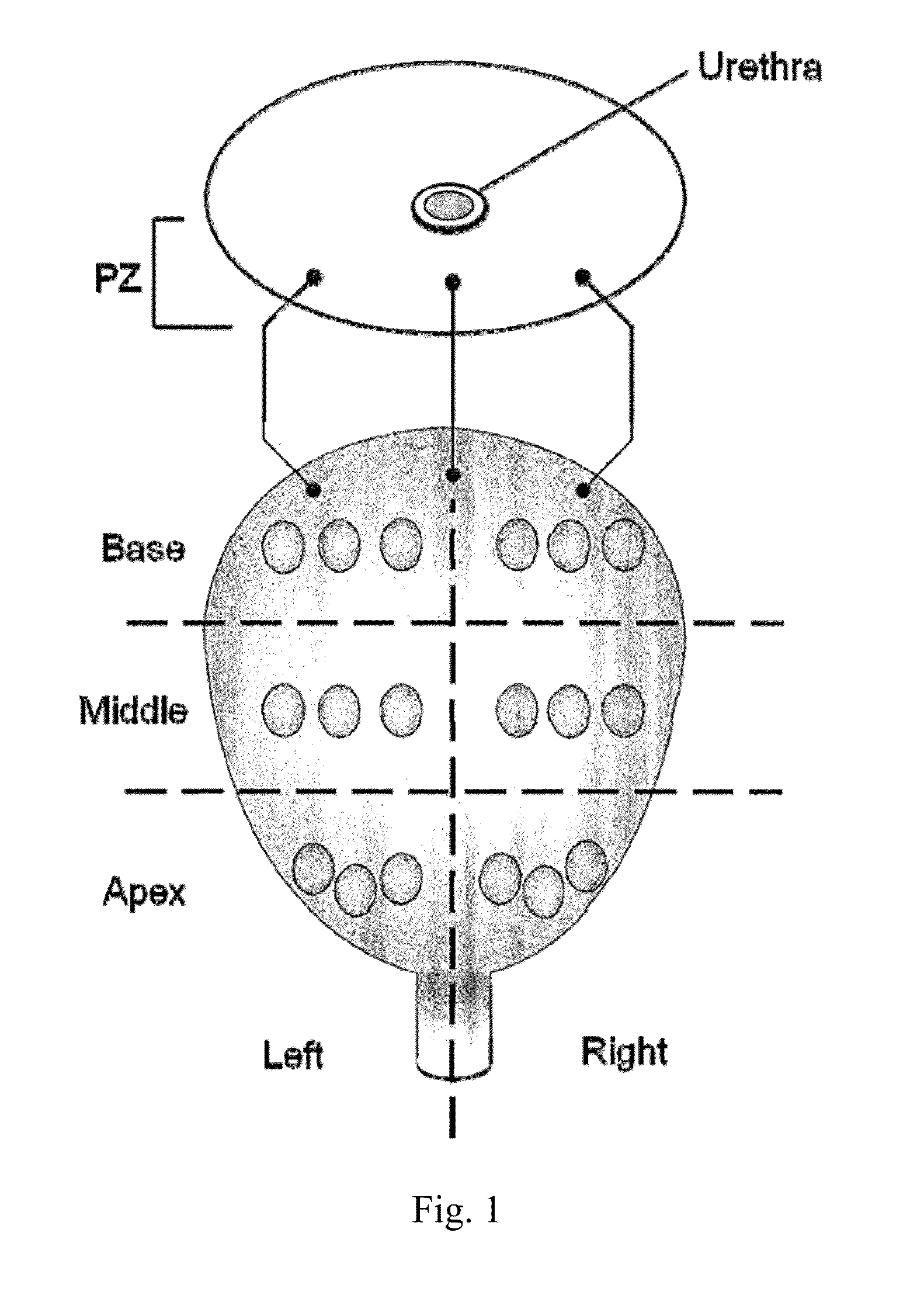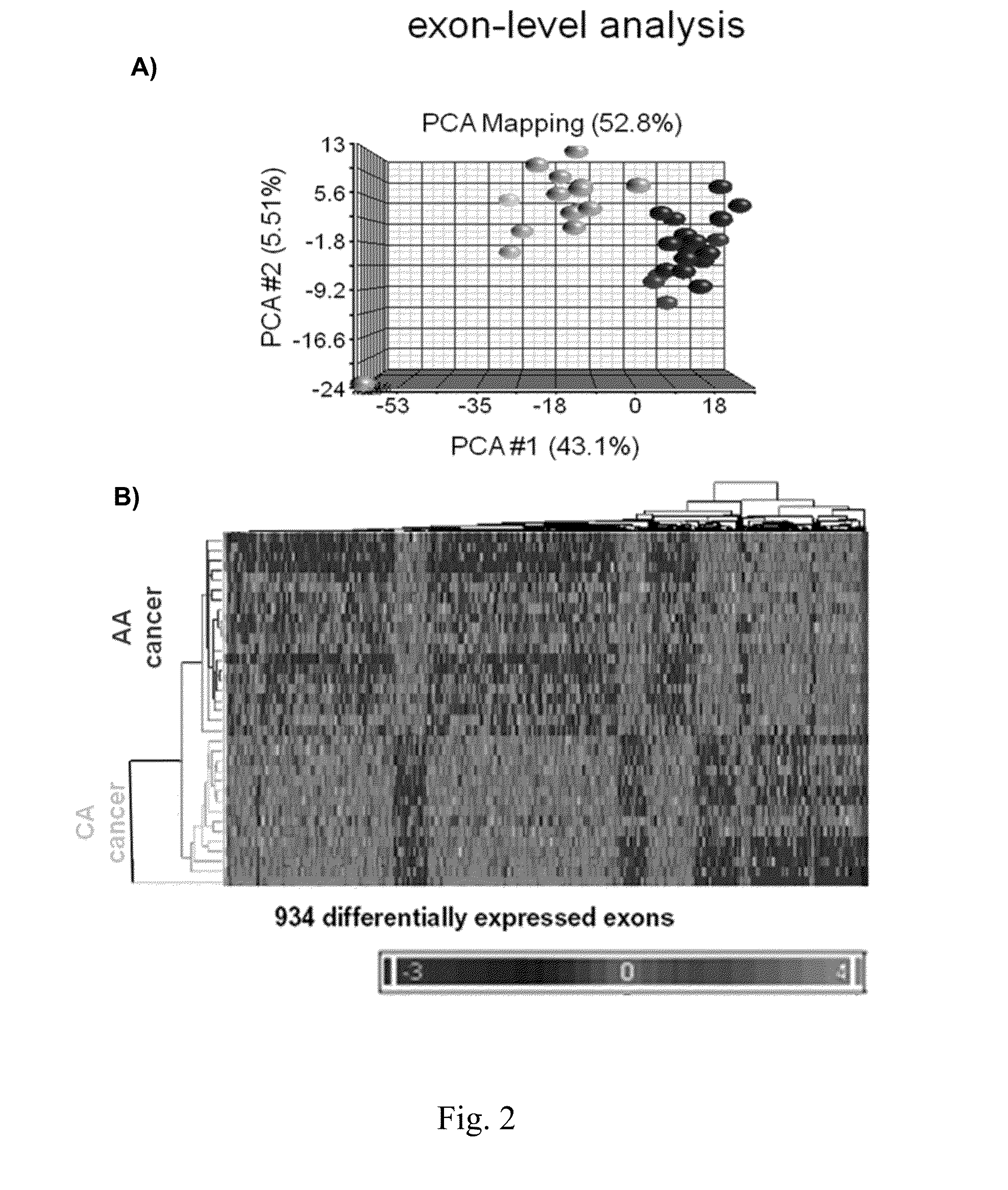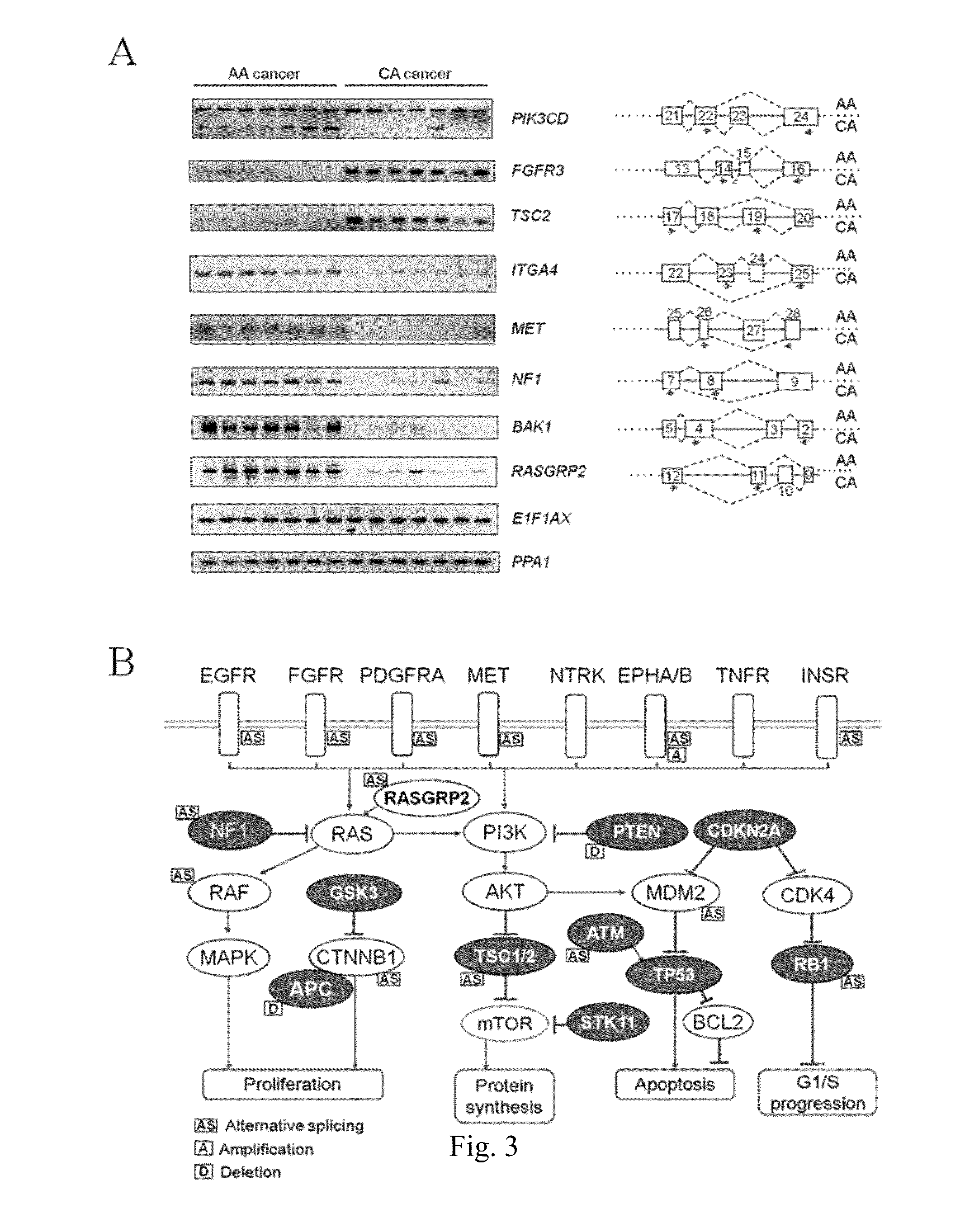Companion diagnostics for cancer and screening methods to identify companion diagnostics for cancer based on splicing variants
a technology of companion diagnostics and variants, applied in the field of screening methods to identify companion diagnostics for cancer based on splicing variants, can solve the problems of marked decrease of cell proliferation and cell migration, and achieve the effects of increasing the short to long variant ratio, increasing cell proliferation and cell migration, and increasing the incidence and mortality ra
- Summary
- Abstract
- Description
- Claims
- Application Information
AI Technical Summary
Benefits of technology
Problems solved by technology
Method used
Image
Examples
example 1
Collection and Characterization of Clinical Specimens
[0127]All patients enrolled into this study fulfilled the following criteria: 1) serum PSA level>7 ng / ml, or PSA level>4 ng / ml in in conjunction with an abnormal digital rectal exam, 2) chemo- and radiation-naïve prior to collecting PCa needle biopsy cores (e.g. no cytotoxic chemotherapy, no androgen deprivation therapy / finasteride-free / no androgen receptor inhibitors, etc.), and 3) no prior history of cancer presentation.
[0128]Needle biopsy cores were collected by GWU Medical Faculty Associates urologists from right-base, left-base, right-mid, left-mid, right-apex, left-apex, right-transition, and left-transition zones of the prostate gland of individual patients presenting with high serum levels (>7 ng / ml) of prostate specific antigen (PSA). A schematic for 18 core biopsy is shown in FIG. 1. Collected cores were immediately examined by a board certified PCa pathologist. PCa cores were determined to have a pathologic tumor stage ...
example 2
Exon Expression Profiling of AA and CA PCa and Normal Specimens
[0130]Total RNA was isolated from PCa and paired normal prostate cores. Exon profiling was performed on the Affymetrix Human Exon 1.0 ST GeneChip. The GeneChip represents an optimal platform for both expression profiling and splice variant detection (Kwan T, Benovoy D, Dias C, Gurd S, Provencher C, Beaulieu P, Hudson T J, Sladek R, Majewski J: Genome-wide analysis of transcript isoform variation in humans. Nat Genet 2008, 40:225-231; Network TCGAR: Comprehensive genomic characterization defines human glioblastoma genes and core pathways. Nature 2008, 455: 1061-1068), as exon level annotations are derived from empirically determined, highly curated mRNA sequences and ab-initio computational predictions.
[0131]The GeneChip contains approximately 5.4 million 5-μm features (probes) grouped into 1.4 million probe sets interrogating over one million exon clusters. A 4-way statistical design (t-test with 10% false discovery rate...
example 3
qRTPCR Validation of Splice Variants
[0134]In order to confirm the differential splicing of genes identified in the gene chip analysis, RNA samples from AA and CA PCa's were tested by reverse transcription polymerase chain reaction (RT-PCR) with specially designed primers listed in Table 1.
TABLE 1 Primers for qRT-PCR validations of splicevariants (-L and -S forms)PIK3CDPrimer-f (SEQ ID NO. 2):CAAACTGAAGGCCCTGAATGAPrimer-r (SEQ ID NO. 3):TCTCGGATCATGATGTTGTCGFGFR3Primer-f (SEQ ID No. 20):ACAACGTGATGAAGATCGCAPrimer-r (SEQ ID No. 21):AGGTCGTGTGTGCAGTTGTSC2Primer-f (SEQ ID No. 29):TTTGACTTCCTGTTGCTGCTPrimer-r (SEQ ID No. 30):TGAGCACTTTATAGCGCAGRASGRP2Primer-f (SEQ ID No. 38):TCACGGTGTCTCTGGATCAGTPrimer-r (SEQ ID No. 39):CCACCATCTTCTCGATGTGCTITGA4Primer-f (SEQ ID No. 53):TCTTGCTGTTGGGAGTATGAAPrimer-r (SEQ ID No. 54):TGATACTGAGGTCCTCTTCCGMETPrimer-f (SEQ ID No. 66):TGGTGGAAAGAACCTCTCAAPrimer-r (SEQ ID No. 67):ATCTTGGCTCACTGCAACCTNF1Primer-f (SEQ ID No. 71):GCATTTTGGAACTGGGTAGAAPrimer-r (SE...
PUM
| Property | Measurement | Unit |
|---|---|---|
| Concentration | aaaaa | aaaaa |
| Length | aaaaa | aaaaa |
| Size | aaaaa | aaaaa |
Abstract
Description
Claims
Application Information
 Login to View More
Login to View More - R&D
- Intellectual Property
- Life Sciences
- Materials
- Tech Scout
- Unparalleled Data Quality
- Higher Quality Content
- 60% Fewer Hallucinations
Browse by: Latest US Patents, China's latest patents, Technical Efficacy Thesaurus, Application Domain, Technology Topic, Popular Technical Reports.
© 2025 PatSnap. All rights reserved.Legal|Privacy policy|Modern Slavery Act Transparency Statement|Sitemap|About US| Contact US: help@patsnap.com



